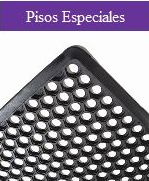Un levantamiento popular desafortunado ocurrió en Madrid en mayo de 1699, llevó a la política de retirada de Oropesa, dejando así el campo libre a Portocarrero, que sin oposición política podía hacer lo que quería.
 Antes de la muerte de Carlos II 21 de noviembre 1700, otro testamento que benefició al nieto de su hermana María Teresa, Felipe, así derrotando se realizó el pretendiente austriaco. Esto se conoce como la voluntad de la discordia de Carlos II, llevado a cabo entre el 3 y 11 de octubre de 1700, cuando el rey ya estaba muy enfermo y quería beneficio Portocarrero ante el rey murió. La manera cómo instó al rey a firmar un último beneficiará a Francia no tiene precio, aun sabiendo que iba a ser el gobernante de España con el nuevo rey. Todo un simple complot político.
Antes de la muerte de Carlos II 21 de noviembre 1700, otro testamento que benefició al nieto de su hermana María Teresa, Felipe, así derrotando se realizó el pretendiente austriaco. Esto se conoce como la voluntad de la discordia de Carlos II, llevado a cabo entre el 3 y 11 de octubre de 1700, cuando el rey ya estaba muy enfermo y quería beneficio Portocarrero ante el rey murió. La manera cómo instó al rey a firmar un último beneficiará a Francia no tiene precio, aun sabiendo que iba a ser el gobernante de España con el nuevo rey. Todo un simple complot político.En esto también se recuerda que en caso de muerte prematura de Felipe, el trono pasaría a su hermano, el duque de Berry.
Charles II también alude en su testamento que se vea bien con Austria, el nuevo rey se casara una archiduquesa de la dinastía de los Habsburgo.
Felipe de Anjou aceptó el trono español como Felipe V, el 15 de noviembre 1700.
Mas info:
| tapetes antiderrapantes | https://www.unimat.com.mx/mat/portfolio/productos/tapetes-antiderrapantes/ |
| tapetes antiestáticos | https://tapetesexpress.com/pisos-dielectricos-y-antiestaticos-product-3 |
| tapetes antiestáticos | https://www.unimat.com.mx/mat/portfolio/productos/tapetes-antiestaticos/ |





